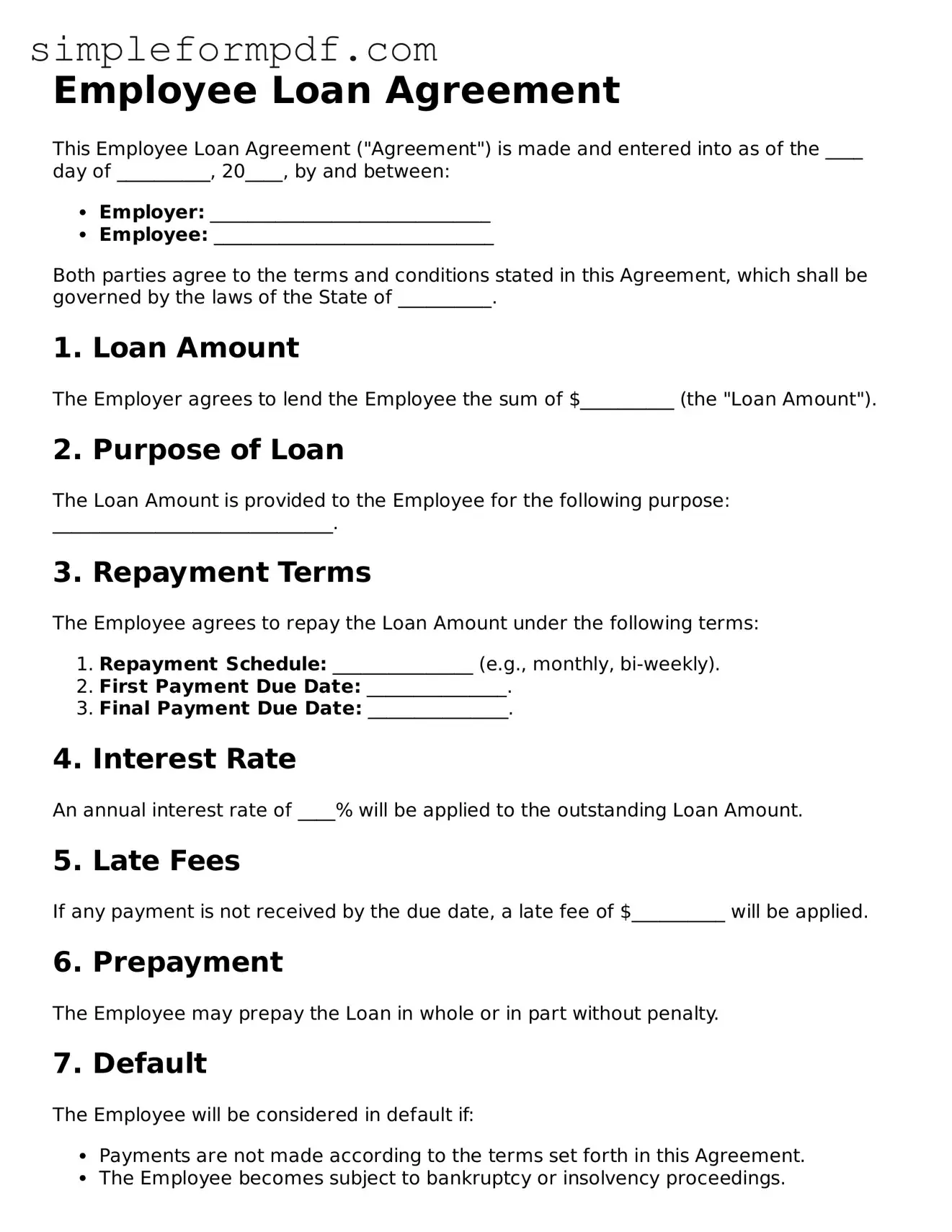Employee Loan Agreement
This Employee Loan Agreement ("Agreement") is made and entered into as of the ____ day of __________, 20____, by and between:
- Employer: ______________________________
- Employee: ______________________________
Both parties agree to the terms and conditions stated in this Agreement, which shall be governed by the laws of the State of __________.
1. Loan Amount
The Employer agrees to lend the Employee the sum of $__________ (the "Loan Amount").
2. Purpose of Loan
The Loan Amount is provided to the Employee for the following purpose: ______________________________.
3. Repayment Terms
The Employee agrees to repay the Loan Amount under the following terms:
- Repayment Schedule: _______________ (e.g., monthly, bi-weekly).
- First Payment Due Date: _______________.
- Final Payment Due Date: _______________.
4. Interest Rate
An annual interest rate of ____% will be applied to the outstanding Loan Amount.
5. Late Fees
If any payment is not received by the due date, a late fee of $__________ will be applied.
6. Prepayment
The Employee may prepay the Loan in whole or in part without penalty.
7. Default
The Employee will be considered in default if:
- Payments are not made according to the terms set forth in this Agreement.
- The Employee becomes subject to bankruptcy or insolvency proceedings.
8. Governing Law
This Agreement will be governed by and construed in accordance with the laws of the State of __________.
9. Signatures
By signing below, both parties agree to the terms of this Agreement:
Employer Signature: ______________________ Date: _______________
Employee Signature: ______________________ Date: _______________
